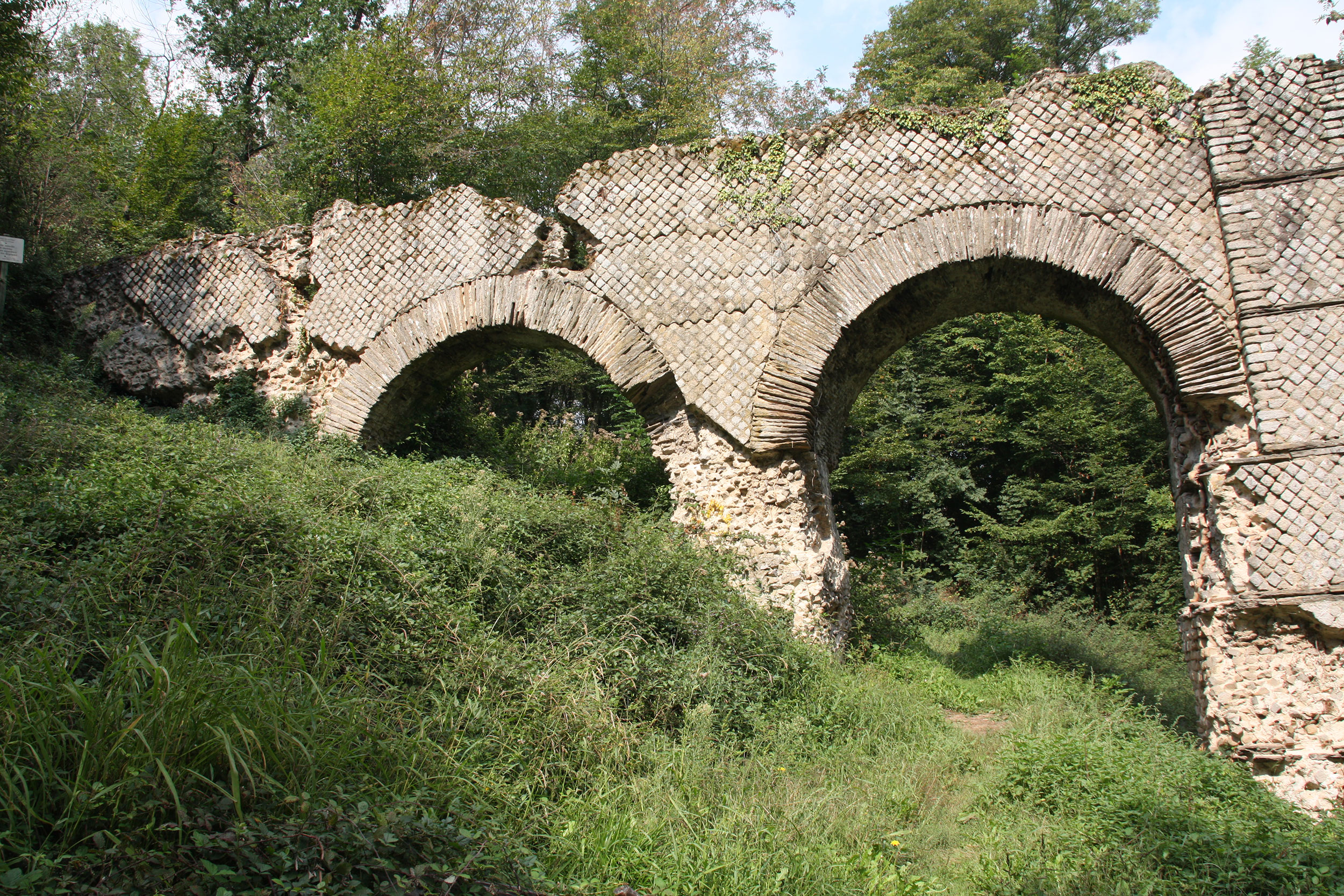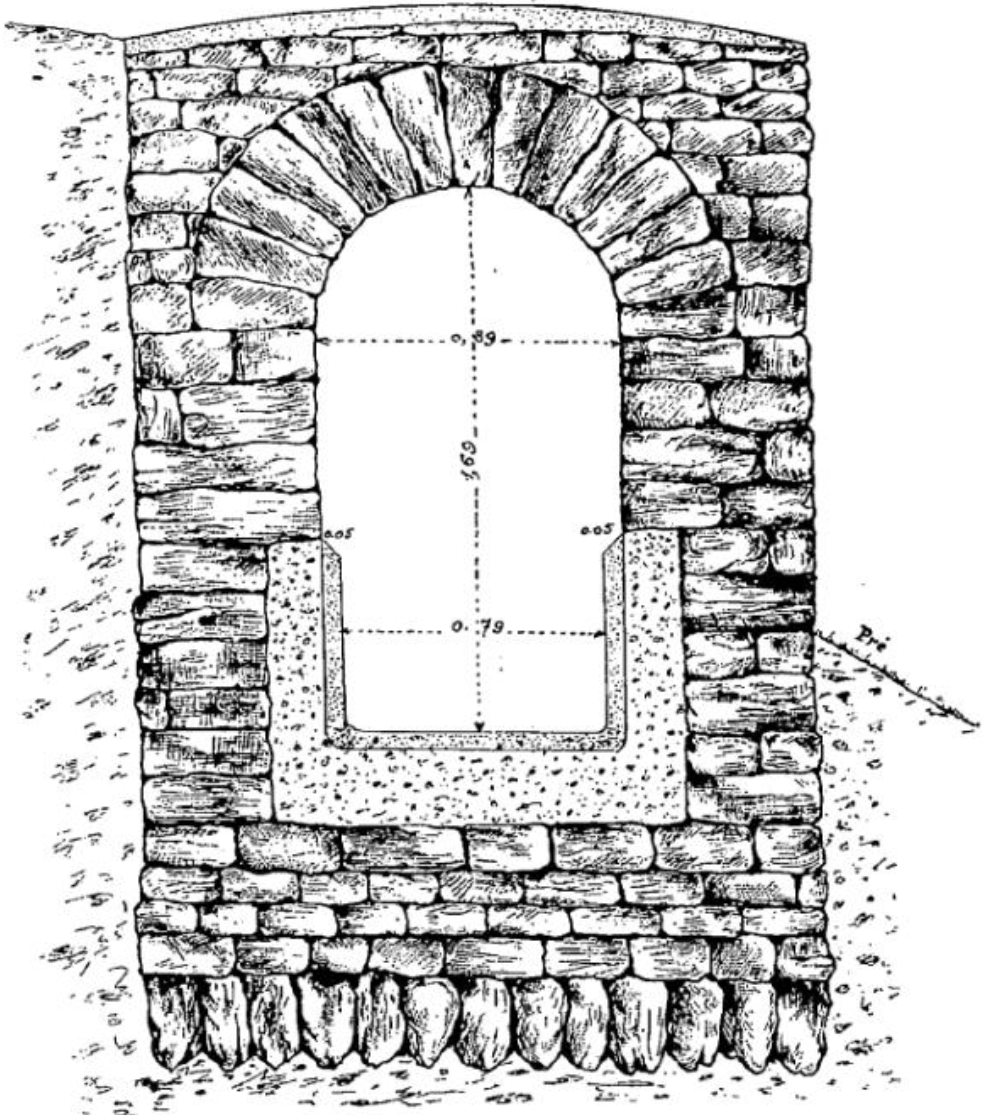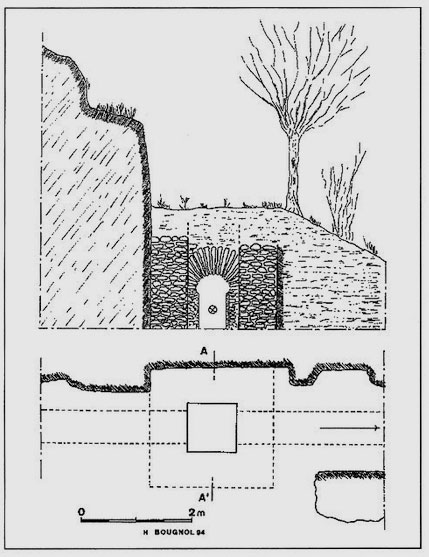Route and description

The Gier Aqueduct, including the loop in the Durèze Valley, is 86km long with a drop in level of only 105m, at an average gradient of 1.1m/km.
It crosses 21 communes, 11 in the Loire Department and 10 in the Rhône. Traces have been found at more than 250 sites. The current hypothesis for the date of its construction is the first half of the 2nd century AD.
Throughout its length the Aqueduct maintains roughly the same direction, towards the North-West. It is however possible to divide it into three parts: the first in the Gier Valley; the second on the Southern part of the Lyon Plateau; and the third ending up at Lyon after crossing the large Garon and Yzeron Valleys.

How was a Roman aqueduct constructed?
Its normal form is of a masonry channel coated with a waterproof render made of tile-mortar (crushed brick or other ceramic mixed with lime) covered by a barrel vault. Constructed in a trench back-filled with earth, it is well protected but invisible.
The water had to flow slowly and calmly so as not to damage the lining.
The right speed was about 1m/s, roughly equivalent to a normal walking pace. With this in mind the gradient of the channel was very slight, around 1 per 1 000 (1mm/m), and regular. As a result, the course of the Aqueduc closely followed the contours and was therefore very sinuous.
Sometimes it was better, in order to avoid a long detour around an elevation, to construct a tunnel. But this was difficult and so tunnels are quite rare and as short as possible.
In order to cross a valley, the channel was usually carried by a bridge, while for the crossing of a lowering of the ground or a declivity, use was made of a thick supporting wall or a row of arches. In these cases the channel was above-ground and therefore visible: giving the general impression that this is what constitutes an aqueduct. Nevertheless, these above-ground structures represent a tiny part of the monument at around 5% of the whole.
The principal of a siphon
When very deep valleys had to be crossed, a simple bridge was no longer possible. The channel was replaced by a system known as a siphon, based on the law of communicating vessels. This is a complicated technique requiring a high degree of understanding and experience in hydraulic engineering. It was used brilliantly but quite rarely in Antiquity, and, setting aside three cases in Turkey, it is Lyon that boasts the largest number of examples.

Chagnon, Cruziot maintenance shaft – plan and section
Maintenance shafts
In order to maintain, clean and repair the channel, it was necessary to be able to get inside it. For this purpose, there are regular openings in the vault. These are like modern-day man-holes. They are found not only on the underground sections, in trench or tunnel, where they have the appearance of wells, but also on the above-ground sections, carried by bridges or rows of arches. The Aqueduct was protected by a series of marker stones.
One of these stones, found at Chagnon has a text in Latin which translates as:
“By the authority of the Emperor Caesar Trajan Hadrian Augustus, no-one has the right to plough, seed or plant in this space which is destined to protect the aqueduct”.
